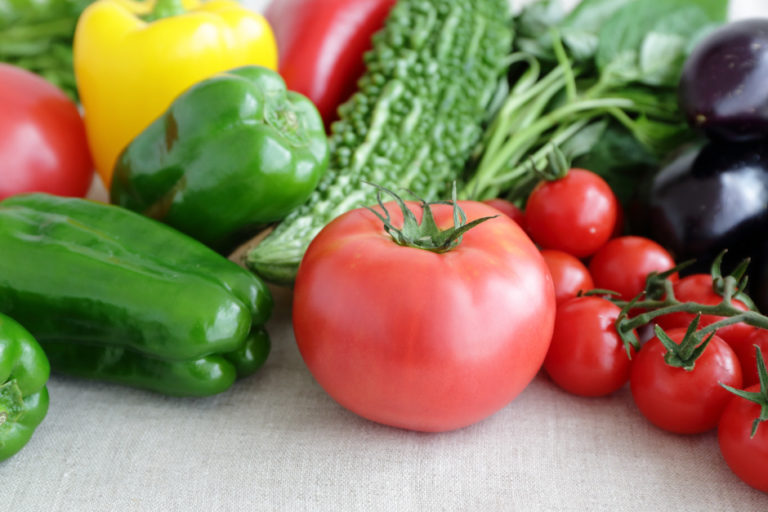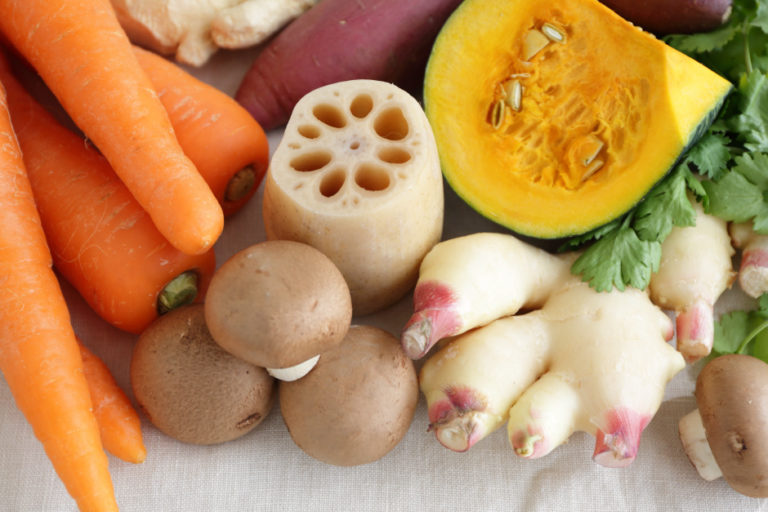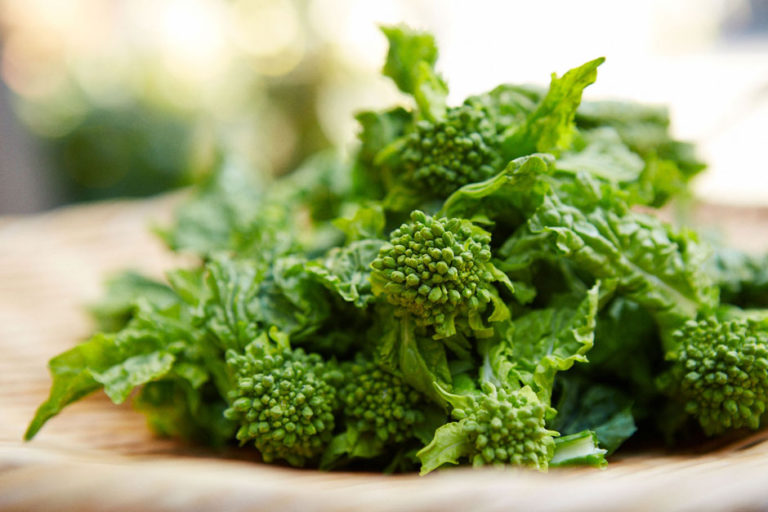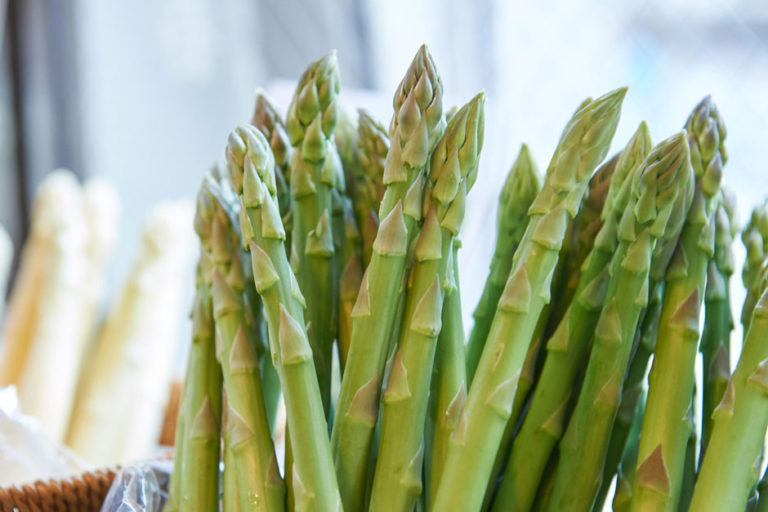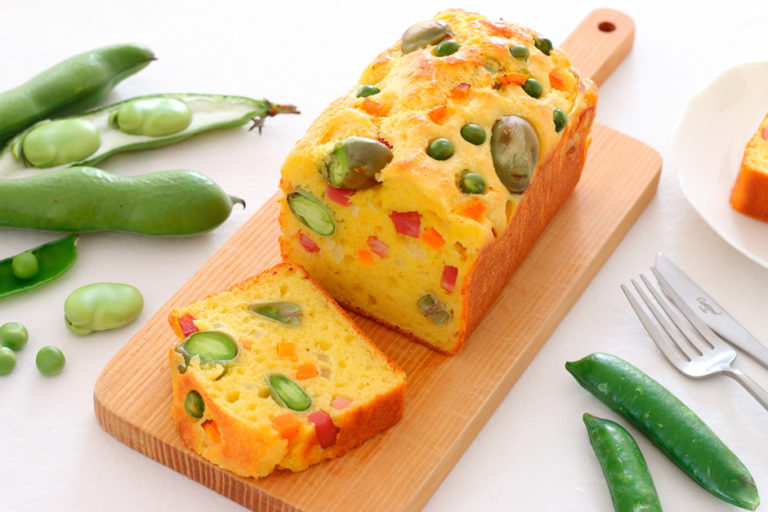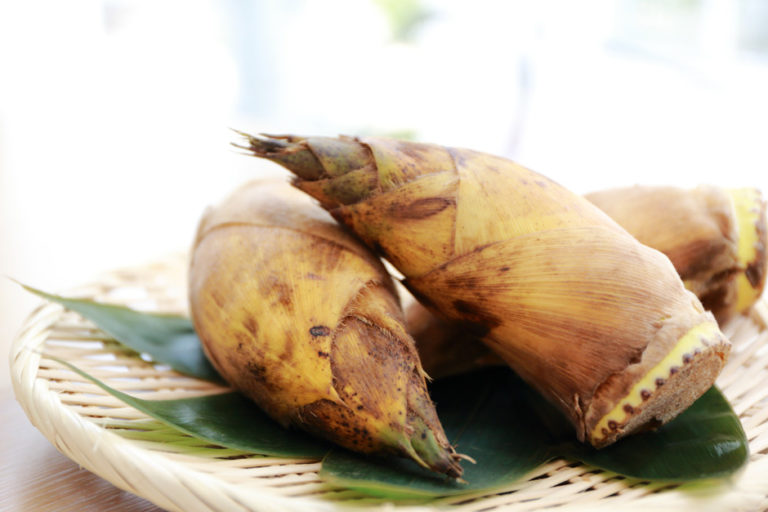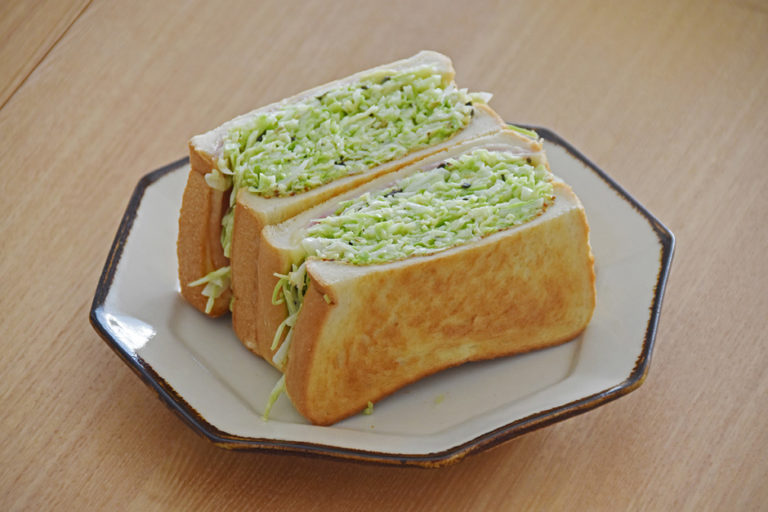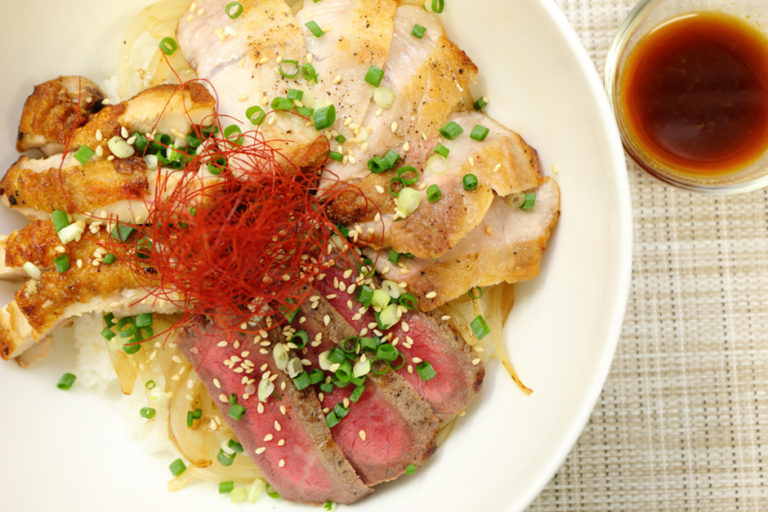Spring Vegetables Awaken the Body
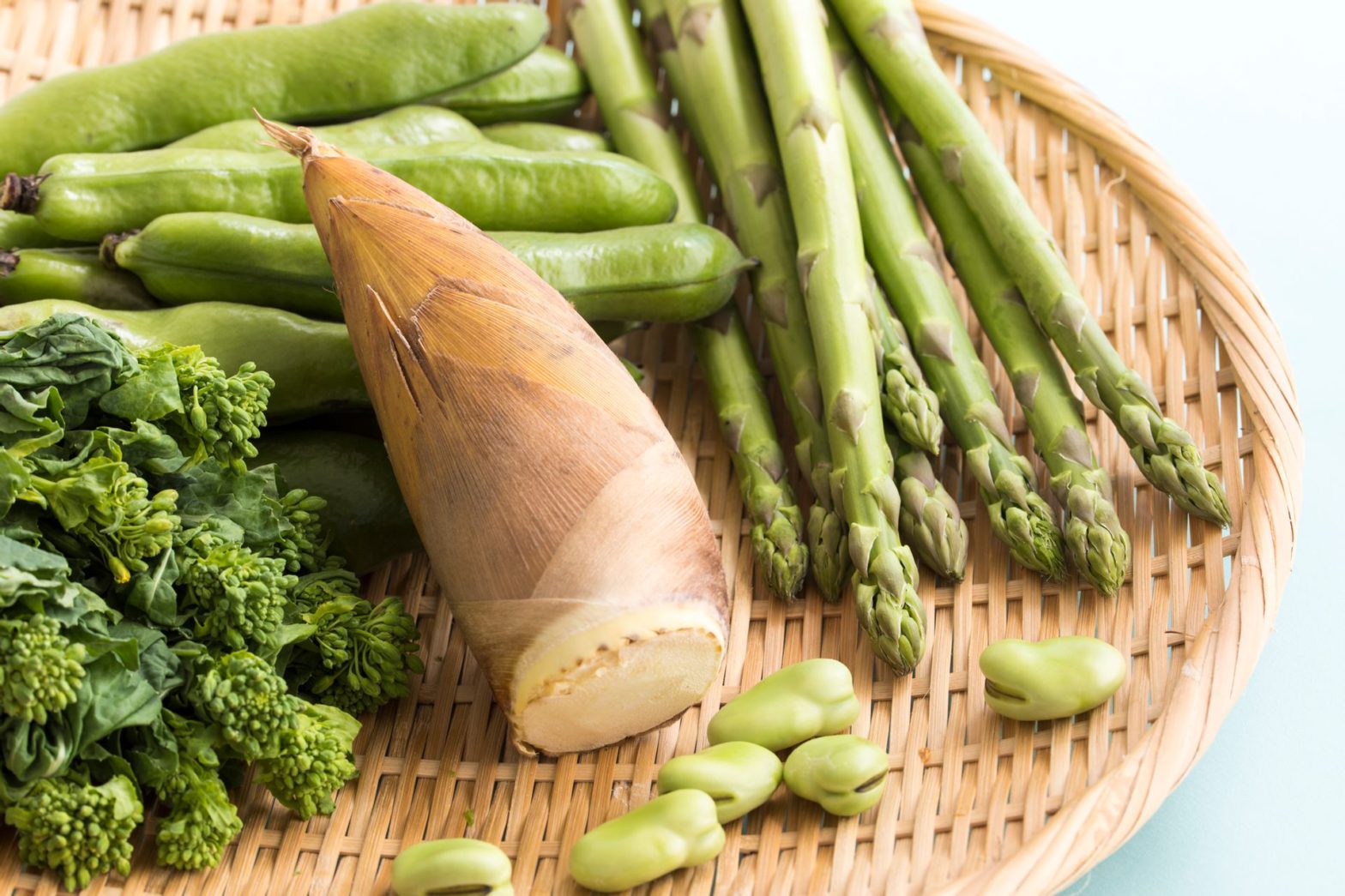
Spring vegetables sprout after wintering
A calendar called the twenty-four solar terms, dividing the year into 24 periods based on the sun’s movement, aptly represents Japan’s passing of the seasons. The seasons of vegetables, which are plants, also change with the twenty-four solar terms.
In-season is the time when vegetables are the most delicious. The most delicious time is based on vegetables grown outdoors. The in-season time for vegetables on one farm changes in a two-week cycle with the twenty-four solar terms, and since Japan extends from the south to the north, the in-season of vegetables gradually shifts from the south to the north.
Spring in the twenty-four solar terms begins at Risshun (the first day of spring) around February 4. It refers to a period up to early May in stages: Usui, Keichitsu, Shunbun, Seimei, and Kokuu. Here are some vegetables that reach their season in the spring.
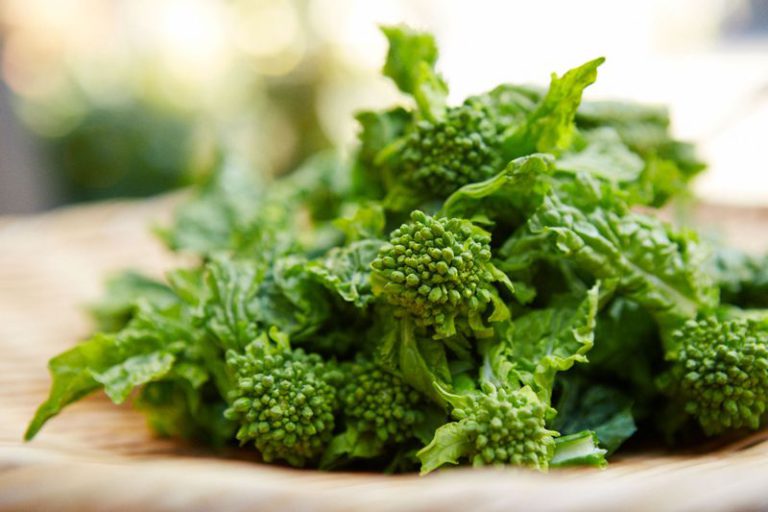
Nanohana
Nanohana is a plant native to Central Asia. In Japan, much of it is harvested in Chiba Prefecture. It is only in season for a short period of time, from February through April. If you aren’t careful, the plant will quickly sprout flowers and get ready to drop their seeds, so we have to make sure we catch them during those three months.
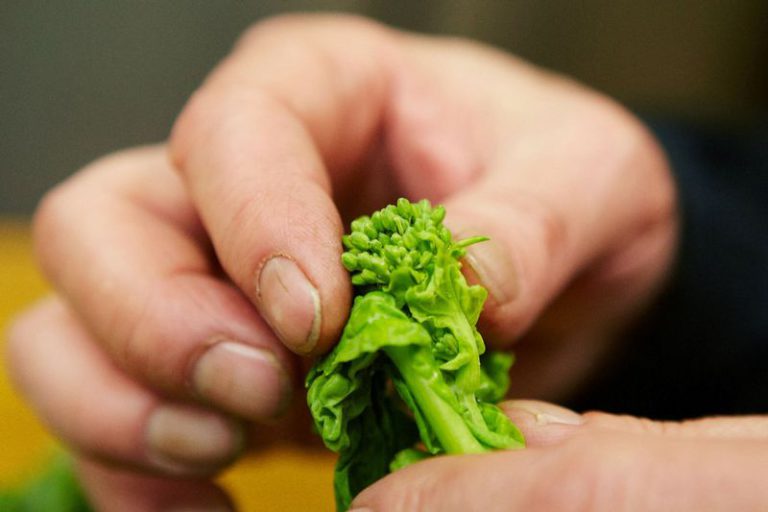
Early in the season, nanohana is juicy and soft. As the plant approaches maturity and heads toward the end of the season, it gradually becomes more and more bitter and acrid. Cooking the vegetable in line with these characteristics allows us to enjoy its short in-season time to the fullest.

When selecting nanohana, in general, it is best to choose ones whose color is lighter green. Looking at the “bud, leaf, and stem” separately makes it easier to select. Buds are tight and firmly closed. Leaves’ veins look beautiful and there is an even amount on left and right sides. Stems are fat and the axes are well centered.

Asparagus
Asparagus is most delicious when it has just started sprouting. Its period of seasonality starts at the earliest from late February in Kyushu, before moving northward. In May, asparagus from Hokkaido is exquisite. The period of seasonality for asparagus starts from Kyushu and moves northward, and that asparagus from Hokkaido is delicious in May.
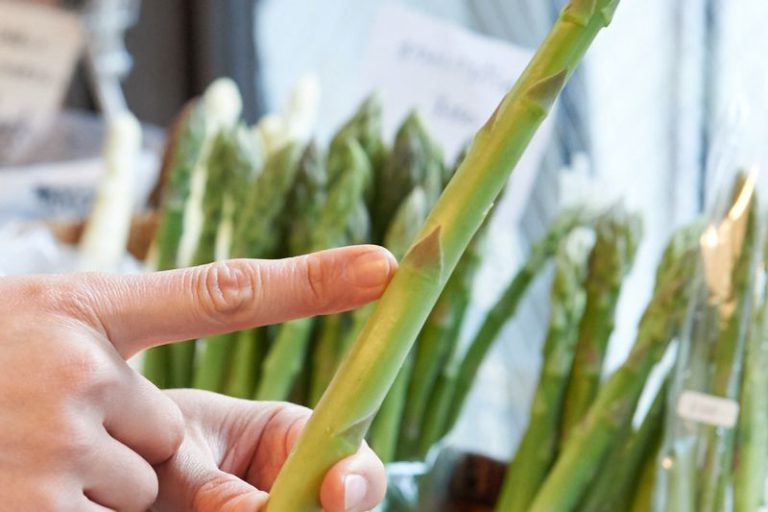
When selecting asparagus, the cut end of the stalk is a perfect circle. The tip is soft and tightly shut. The scales on the sides are equilateral triangles and are evenly arranged
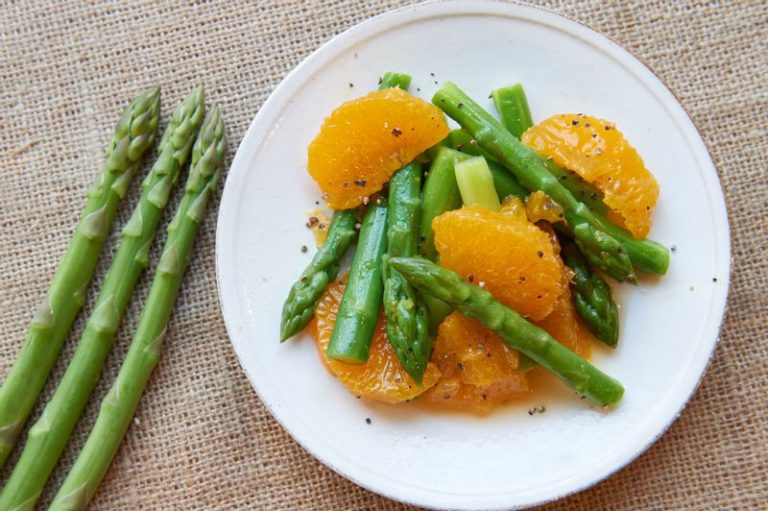
As the body craves sourness in spring, eating asparagus with a dressing of citrus fruit and white wine vinegar that offers a full sour taste.

Broad beans
The name soramame (Japanese name for broad beans) is said to have come from the fact that the pods grow toward the sky (sora in Japanese means “sky,” and mame means “beans”).
Broad beans are shipped from Kagoshima, starting around December and January. After that, their peak location moves northward to Ehime and Ibaraki Pre-fectures, just like the forefront of cherry trees. Eventually, the broad beans stretch to Aomori.
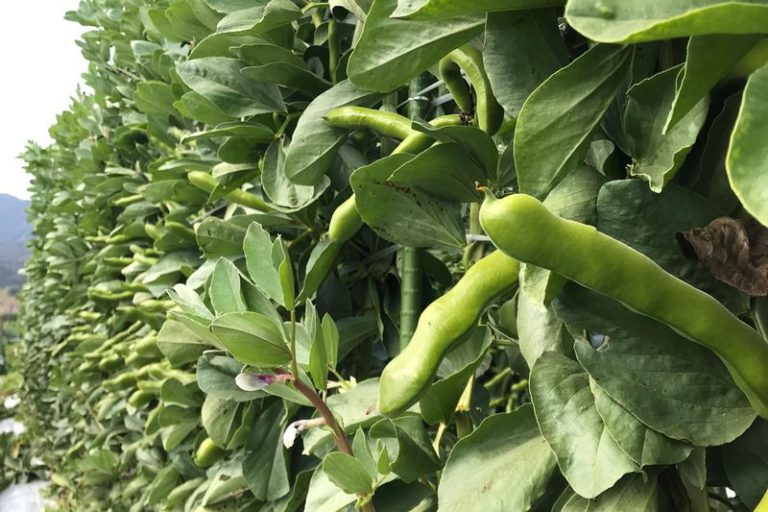
When selecting broad beans, if the pods have fluff, they are fresh. If they are deep green, fat, and you can tell the shape of the beans inside, they will be tasty.
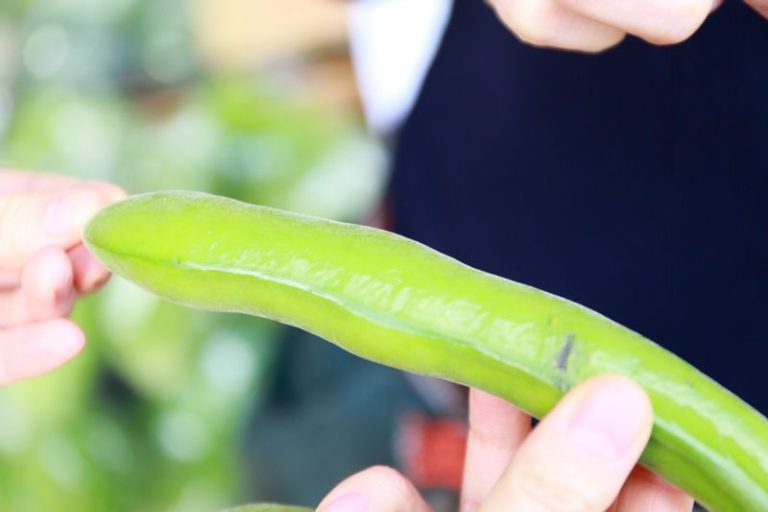
First, surprisingly few people know that the thin skin on the beans is edible. The young beans with green joints with the pods can be eaten whole with the thin skin. They are moist. Completely ripe beans with brown joints are better eaten without the skin because the skin would be hard. Apparently, these older beans are fluffy and have a stronger taste.
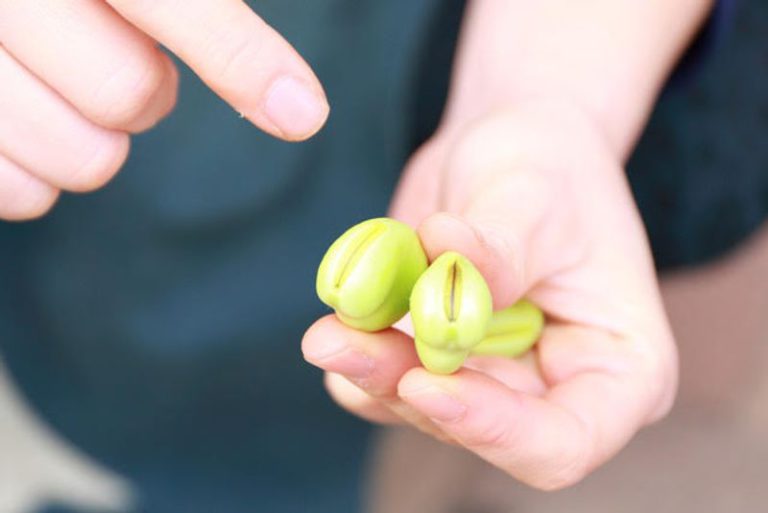
Grilling whole broad beans is recommended. If the whole pod is grilled in a toaster or oven until it turns black, the beans inside get thoroughly heated. Or, to boil them with salt, an incision made in the joints between the beans and pods will help the salt to go into the beans and make them tasty. The other thing many of us don’t know is that the white fluff inside the pods is also edible.
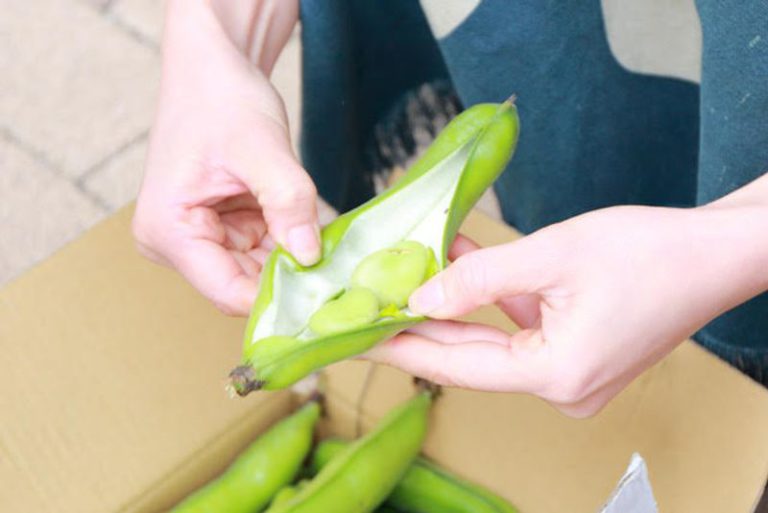
The fluff is actually nutritious. If the beans are young with green joints, you should scoop the beans with a spoon with the fluff and eat them together.
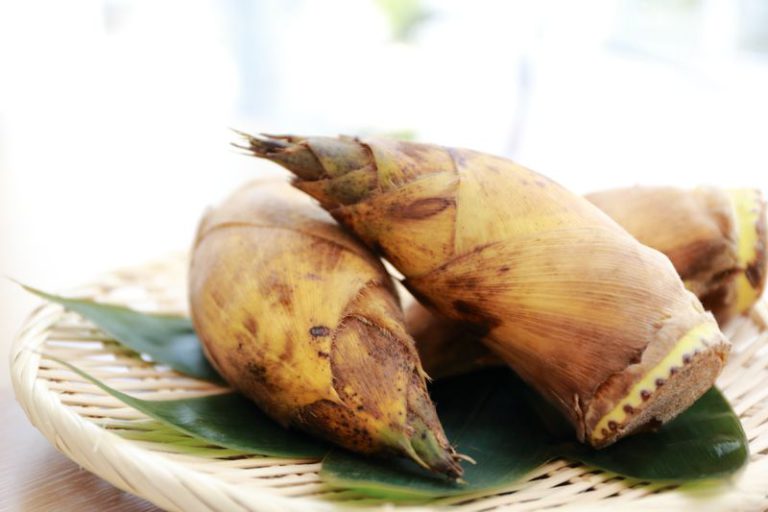
Bamboo Shoot
Bamboo shoot is the young sprout growing from the bamboo’s underground stem. Bamboo shoot literally means the bamboo’s child. The rate of the bamboo shoot’s growth is incredible as some bamboo shoots are known to grow up to 1 meter in a day.
Its season is normally at the end of March to May. Appearance of the mosochiku in the market starts in Fukuoka Prefecture, a representative prefecture in Kyushu, and proceeds north to the Kansai and Kanto areas as if it were a production relay.
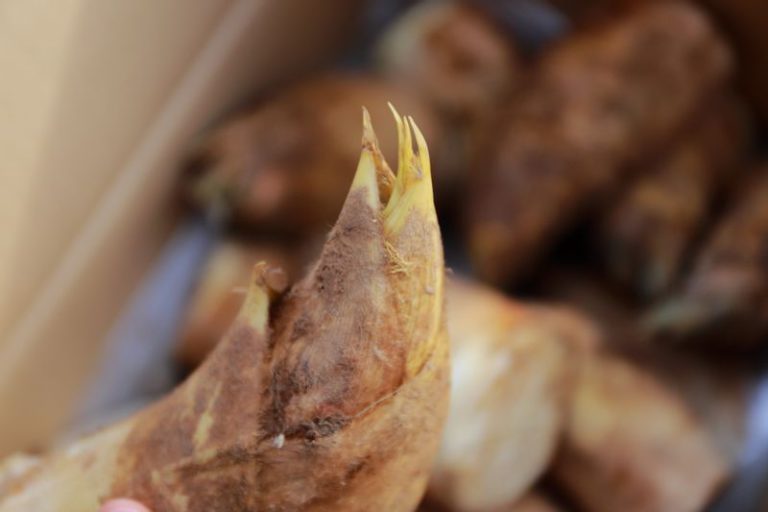
Mosochiku is soft and easy to eat because it is milder than other varieties as it is not as bitter. The taste of the bamboo shoots is greatly affected by the soil in which they grew. The bamboo shoots grown in the red soil in Fukuoka are especially noted for their mild sweetness. Kyoto, too, is famous as a producer of bamboo shoots. Their “shirako” is a high-grade bamboo shoot known for its light-colored skin. Following the mosochiku, the “hachiku” with its reddish-purple skin and the “nemagaritake” whose root is curved come into season in May and June.

When selecting bamboo shoots, choose one with a yellow tip. and a fresh cut end.
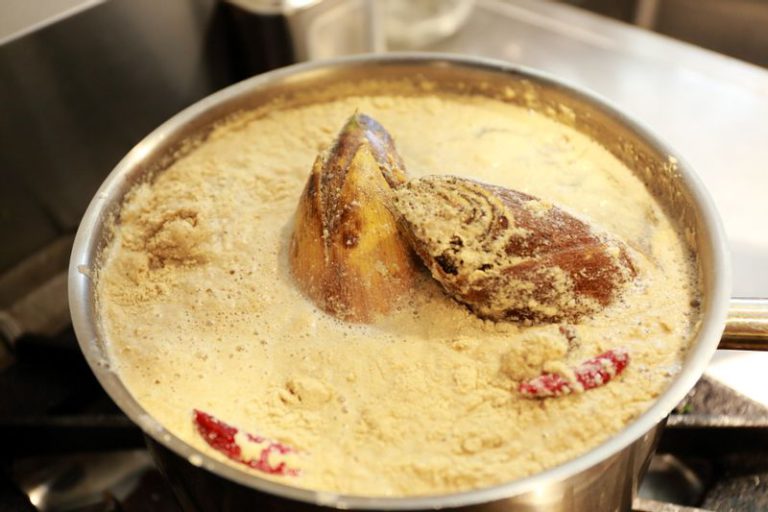
Exposure to sunlight advances the process of photosynthesis in bamboo shoots, causing both the tips of the bamboo shoot to become green and changing the color of the skin as well. This exposure increases the sharp taste and bitterness of the bamboo. Bamboo shoots having yellow tips were harvested prior to reaching the surface. Proper removal of the bitter taste from bamboo shoots results in a tasty treat. Check the end for freshness. Please select shoots having ends that have not dried out as they are fresh.
Enjoy a variety of spring vegetables with these easy recipes
We have come up with recipes that use in-season spring vegetables introduced here. They include bitter and astringent field mustard and bamboo shoots, asparagus with an enjoyable crispy texture, and tender and sweet broad beans. One is spring rolls made with an abundance of unique spring vegetables, and the other is a braised dish that allows you to completely enjoy spring vegetables’ umami.
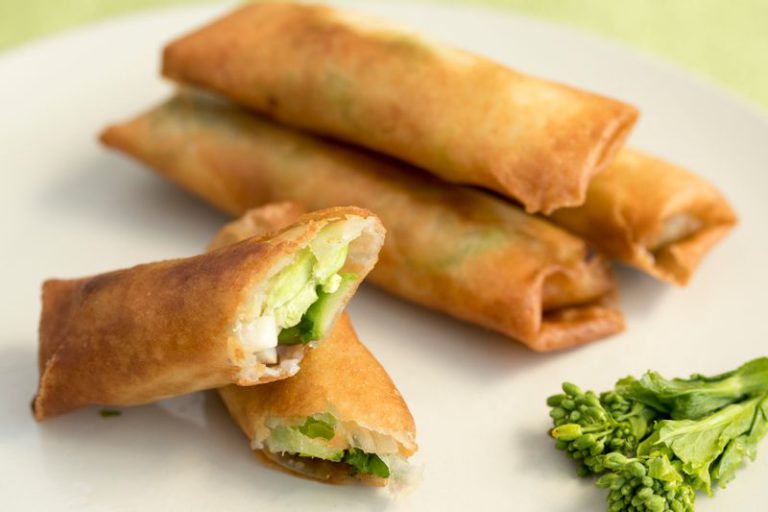
RECOMMENDATION RECIPES
The name “spring rolls” came about because the rolls were filled with early spring vegetables. You will feel spring in the air from the dish containing field mustard, asparagus, broad beans and bamboo shoots. For a crispy finish start deep-frying on low heat and raise the temperature gradually.
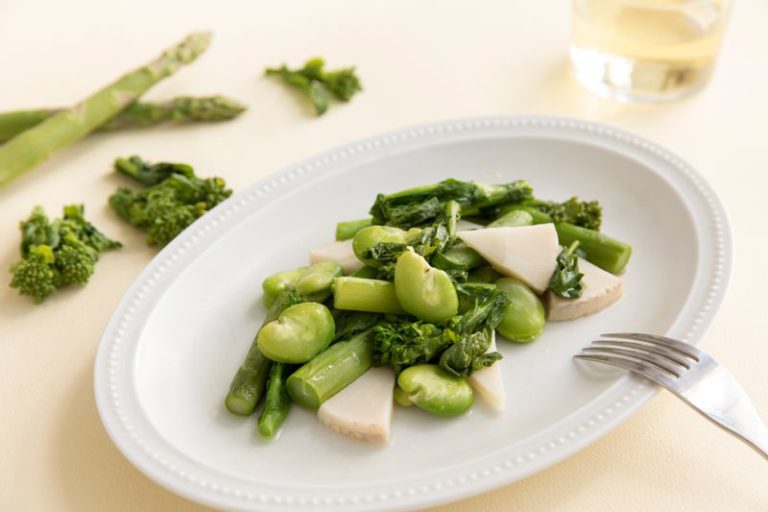
RECOMMENDATION RECIPES
Étuver is French for braise. Vegetables become tasty when you simply add a bit of water and fat to braise.
Spring vegetables with their distinctive bitterness and astringency hint at the arrival of spring. How about enjoying their personalities and adding them to your meals?

